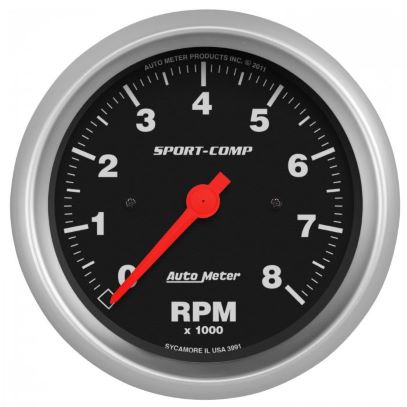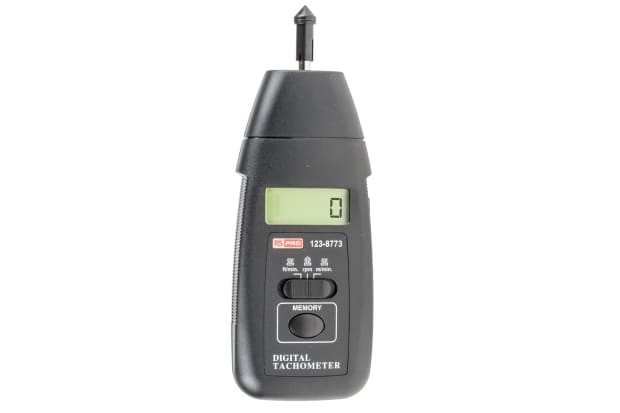Top Reasons That Every Motorist Needs a High-Quality Tachometer
Top Reasons That Every Motorist Needs a High-Quality Tachometer
Blog Article
Opening the Tricks of Tachometers: Whatever You Need to Learn About This Important Instrument in Your Vehicle
Comprehending the intricacies of tachometers can provide beneficial understandings right into your automobile's performance and maintenance demands. From gauging engine rate to figuring out the data it provides, tachometers work as a vital tool for vehicle owners and lovers alike. By unraveling the mysteries behind this important tool, you can open a wide range of info that can boost your driving experience and ensure the longevity of your lorry.
Relevance of Tachometers
The importance of tachometers lies in their capacity to provide important real-time data concerning an engine's rotational rate, allowing for exact monitoring and maintenance of machinery. By measuring the changes per min (RPM) of an engine's crankshaft, tachometers supply important insights right into the engine's efficiency - tachometer. This data is vital for making certain that the engine runs within its optimum range, staying clear of potential damage from over-revving or underperforming
Tachometers play a crucial duty in aiding drivers and specialists find any kind of abnormalities in the engine's rate, which can show concerns such as gas inadequacy, mechanical problems, or excessive strain on the engine. By promptly determining these concerns via tachometer readings, maintenance can be done proactively, stopping expensive repair services and downtime over time.
Moreover, tachometers are specifically critical in high-performance cars and equipment, where accurate control over engine speed is required for ideal operation. Racing autos, aircraft, and industrial equipment rely upon tachometers to deliver peak efficiency while preserving safety and security requirements. Basically, tachometers are not just instruments for gauging rate yet important tools for making certain the smooth and efficient operation of engines across different applications.
How Tachometers Action Engine Speed
Utilizing sensors that identify the frequency of electric pulses generated by the engine's ignition system, tachometers accurately determine the rotational rate of an engine. By keeping an eye on the rate at which these pulses are gotten, tachometers give real-time feedback on exactly how quickly the engine's crankshaft is rotating per minute, commonly described as transformations per min (RPM)
The tachometer's sensing unit, typically linked to the engine's ignition coil or ignition system wires, gets the electric signals generated each time a cylinder fires. These signals are after that transformed into RPM analyses presented on the scale or tool collection within the vehicle driver's view. Tachometers can be analog or electronic, with modern-day lorries commonly including digital displays for precise and immediate RPM analyses.
This information is essential for chauffeurs to recognize the engine's efficiency, prevent over-revving, optimize gear shifting, and ensure efficient fuel intake. By properly gauging engine speed, tachometers play an important role in aiding motorists run their automobiles safely and effectively.
Translating Tachometer Readings
Having a clear understanding of how tachometers determine engine speed sets the structure for successfully interpreting the RPM analyses presented. Interpreting tachometer readings is important for optimum automobile efficiency and engine health. RPM (Changes Per Min) analyses on the tachometer show the rate at which the engine's crankshaft is revolving. When the engine is idling, the tachometer needle typically relaxes hop over to here around 600-1000 RPM, relying on the car. As you accelerate, the RPM will boost, mirroring the engine's greater rotational speed. When changing gears in a hand-operated transmission automobile, the RPM will drop as you engage the clutch and modification equipments, then climb again as you accelerate in the brand-new gear. Checking the tachometer can help you determine one of the most reliable moving factors to optimize gas economy and engine power. Additionally, uncommon changes or regularly high RPM readings can indicate possible concerns with the engine that may require expert interest. By taking note of the tachometer analyses and comprehending exactly how to translate them, you can ensure your car operates efficiently and efficiently.


Tips for Utilizing Tachometers Effectively
To improve driving efficiency and optimize engine performance, what trick methods can be applied for successfully using tachometers? Tachometers are important devices that supply real-time comments on engine speed, enabling chauffeurs to make informed choices for far better efficiency - tachometer. Below are some tips for using tachometers successfully:
Understanding Ideal RPM Array: Familiarize on your own with the optimum RPM (Transformations Per Min) array for your car. Maintaining the engine within this range can improve fuel performance and prolong the engine's life-span.
Shifting Equipments at the Right Time: Utilize the tachometer to establish the best time to move equipments. Upshifting prematurely or far too late can lead to lowered efficiency and performance. Goal to change equipments when the RPM reaches the optimum range for the next equipment.
Keeping An Eye On Engine Stress And Anxiety: High RPMs for long term periods can stress the engine. Maintain an eye on the tachometer to avoid over-revving, especially throughout velocity or when lugging heavy tons.
Tachometers and Automobile Maintenance
When taking into consideration automobile upkeep, tachometers play an important function in keeping an eye on engine performance and discovering potential concerns. Tachometers offer crucial data top article on engine rate, allowing vehicle visit this web-site drivers and technicians to make sure that the engine is operating within the recommended RPM variety.
Along with finding prospective problems, tachometers can additionally assist in maximizing fuel efficiency. By maintaining the engine speed within the optimum range, motorists can enhance their gas mileage and lower fuel usage. This not just profits the chauffeur's purse yet additionally adds to environmental conservation by decreasing hazardous exhausts.
Conclusion

Report this page